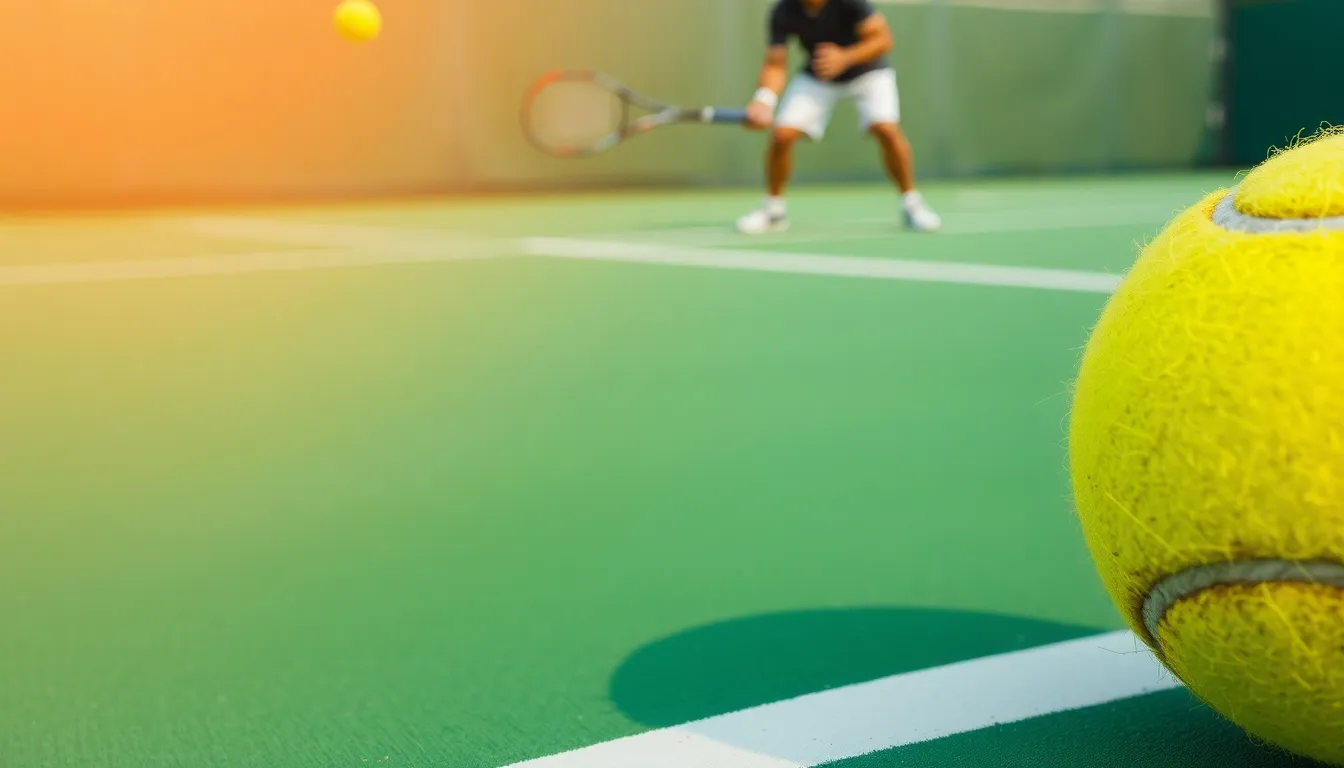Ever wondered how long a tennis ball actually lasts? That brand new can of balls you just opened might not stay playable as long as you think. Whether you’re a weekend warrior or competitive player, understanding a tennis ball’s lifespan can save you money and improve your game.
Tennis balls begin losing their bounce and performance from the moment you crack open the pressurized can. Factors like playing surface, temperature, and your style of play all dramatically affect how quickly they wear out. Even professional tournaments replace balls after just nine games, but recreational players often push their balls far beyond their optimal performance window.
The Lifespan of Tennis Balls: What You Need to Know
Tennis balls have a surprisingly short performance life compared to other sports equipment. Most players don’t realize their balls start deteriorating from the moment the pressurized can is opened. During my 8 years of coaching experience, I’ve seen countless players using dead balls without even recognizing the impact on their game.
A new tennis ball typically maintains its optimal performance for just 1-3 hours of continuous play. After this brief window, the felt begins to fluff, the internal pressure drops, and that satisfying bounce gradually diminishes. Professional tournaments replace balls after only 9 games because they understand this rapid decline.
Playing surface dramatically affects ball longevity. Hard courts are particularly abrasive, wearing down the felt covering in as little as 1 hour of intensive play. Clay courts are gentler, often extending a ball’s useful life by 20-30%. When I switched from coaching on hard courts to clay at the University of Florida, I immediately noticed how much longer our practice balls maintained their playability.
Storage conditions matter significantly. Tennis balls kept in a cool, pressurized container between uses can last up to 2-3 times longer than those left loose in hot car trunks or garage spaces. Many of my semi-professional students have adopted the practice of using pressurized tubes for ball storage, reporting noticeable improvements in ball consistency between practice sessions.
Your playing style influences ball wear. Heavy hitters with lots of spin deteriorate balls much faster than players with a lighter touch. One particularly powerful student of mine would routinely wear through a can of balls in a single 90-minute lesson, while other players using the same court could get three or four sessions from theirs.
Regular recreational players often use balls far beyond their optimal performance window. While professionals won’t touch a ball after 9 games, typical club players might use the same balls for 4-6 weeks of regular play. This extended use can negatively impact technique development and overall game enjoyment.
Factors That Affect Tennis Ball Longevity

Tennis balls wear down at different rates depending on several key factors. Understanding these variables helps you maximize your ball’s performance and value, whether you’re a casual player or competitive athlete.
Playing Surface Impact
Playing surfaces dramatically influence how quickly tennis balls deteriorate. Hard courts cause the most damage to tennis balls, with the abrasive concrete or acrylic surface wearing down the felt covering rapidly and accelerating pressure loss. This reduction in pressure directly affects the ball’s bounce and control characteristics, sometimes making balls unplayable after just a few hours of intense play.
Clay courts treat your tennis balls more gently, extending their lifespan by 20-30% compared to hard courts. But, clay particles can collect in the felt, slightly altering the ball’s weight and bounce properties over time. Many players find this trade-off acceptable given the important longevity benefits.
Grass courts preserve tennis balls the best, causing minimal felt damage and maintaining pressure longer than other surfaces. The soft, natural surface creates less friction against the ball, though grass courts remain relatively uncommon outside professional tournaments like Wimbledon.
Indoor courts typically offer better ball preservation due to their controlled environment and often softer surfaces. Temperature stability in indoor facilities prevents the pressure fluctuations that outdoor conditions can cause.
Storage Conditions
Proper storage significantly extends tennis ball life. High temperatures, humidity, and direct sunlight accelerate pressure loss and felt deterioration, with balls left in hot car trunks or outside potentially becoming unplayable within days.
Cool, dry environments preserve ball pressure and felt quality most effectively. Pressurized containers or specialized tennis ball tubes help maintain the factory-sealed pressure levels, dramatically extending usability. These containers create a pressurized environment that counteracts the natural tendency of balls to lose their internal pressure over time.
Many professional players store their practice balls in pressurized containers between sessions, effectively doubling or tripling their usable lifespan. Investing in proper storage answers offers important cost savings for regular players in the long run.
Frequency of Use
How often and how intensely you play directly impacts ball longevity. Casual players hitting occasionally might get several weeks or even an entire season from a set of balls, while competitive players often replace balls after just 1-3 hitting sessions.
Your playing style makes a substantial difference in ball wear. Hard-hitting players with powerful serves and heavy topspin generate more friction against the felt, wearing balls down faster. A ball subjected to 120mph serves deteriorates much more quickly than one used in a gentle rally session.
Professional tournaments replace balls after just nine games because the performance decline is noticeable enough to potentially affect match outcomes. Recreational players typically continue using balls long past their optimal performance window, sometimes for 4-6 weeks, though this practice can negatively impact technique development and game enjoyment.
How Long Do Tennis Balls Last for Casual Players?
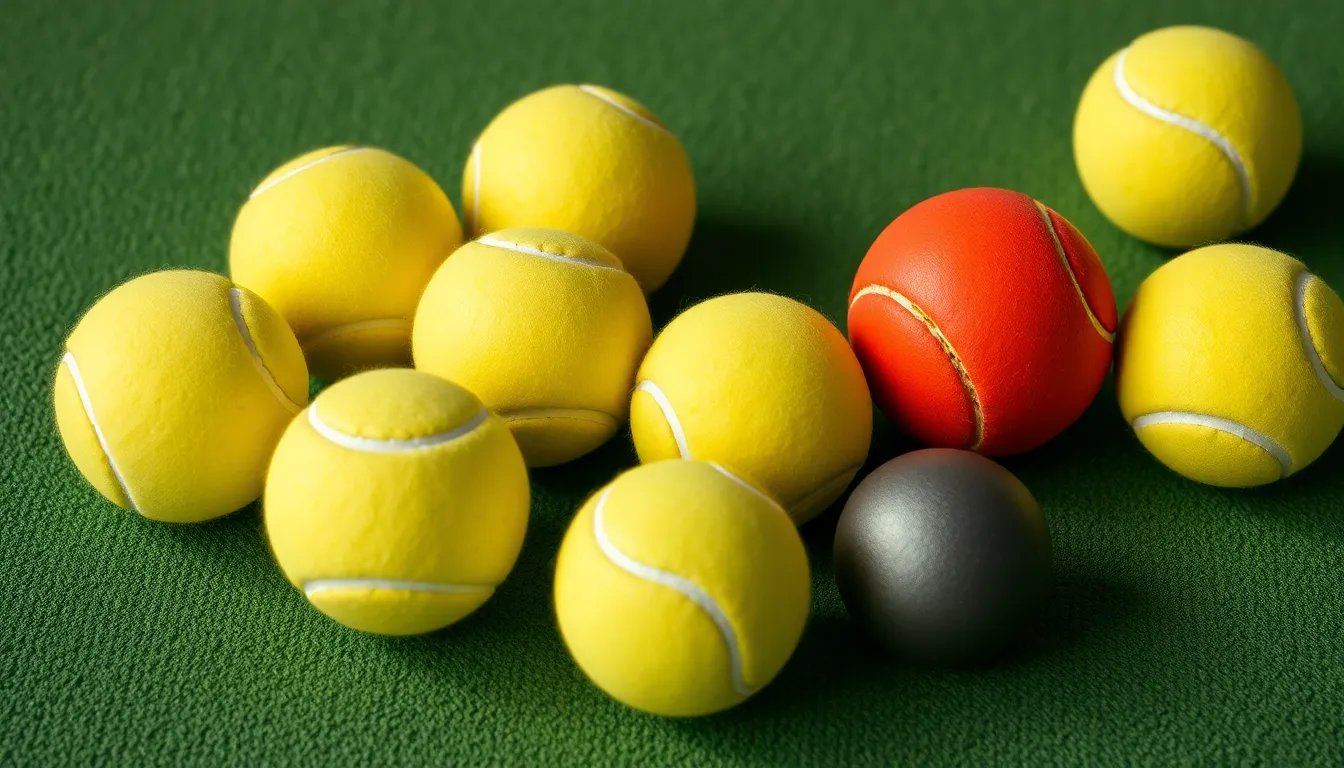
Tennis balls for recreational players typically last 1-4 weeks with regular play. Casual players don’t need to replace their balls as frequently as professionals, who swap them out after just 9 games.
The longevity of your tennis balls depends significantly on how often you play. During my years coaching at local clubs, I’ve noticed weekend warriors often use the same can for an entire month, while more dedicated players replace theirs every 1-2 weeks for optimal performance.
Different ball types offer varying lifespans for casual players:
| Ball Type | Lifespan for Casual Play | Typical Match Usage |
|---|---|---|
| Standard Pressurized | 1-4 weeks | 1-3 matches |
| Premium Pressurized | 3-6 weeks | 2-4 matches |
| Pressureless | 1+ year | Multiple matches |
| Training Balls | 4-6 months | Many practice sessions |
| High Altitude | 3-5 weeks | 3-5 matches |
Pressurized balls lose their bounce quality gradually after opening. Last summer, I tested this with my recreational group by marking fresh balls and tracking their performance – most players couldn’t detect important difference until about week three of twice-weekly play.
Playing surface dramatically impacts your ball’s lifespan. Hard courts wear down felt and pressure faster than other surfaces. Clay courts extend ball life by 20-30% compared to hard courts, while grass courts preserve them best due to minimal abrasion.
Storage conditions matter tremendously for maintaining ball pressure. Keeping your tennis balls in a cool, dry place away from extreme temperatures prolongs their usable life. Many of my students have started using pressurized containers to extend their balls’ playability between sessions.
For casual players on a budget, pressureless balls offer the best value. These balls maintain consistent performance for months rather than weeks because they don’t rely on internal pressure for their bounce. They feel slightly different than standard balls but provide reliable play for recreational users over extended periods.
How Long Do Tennis Balls Last for Competitive Play?
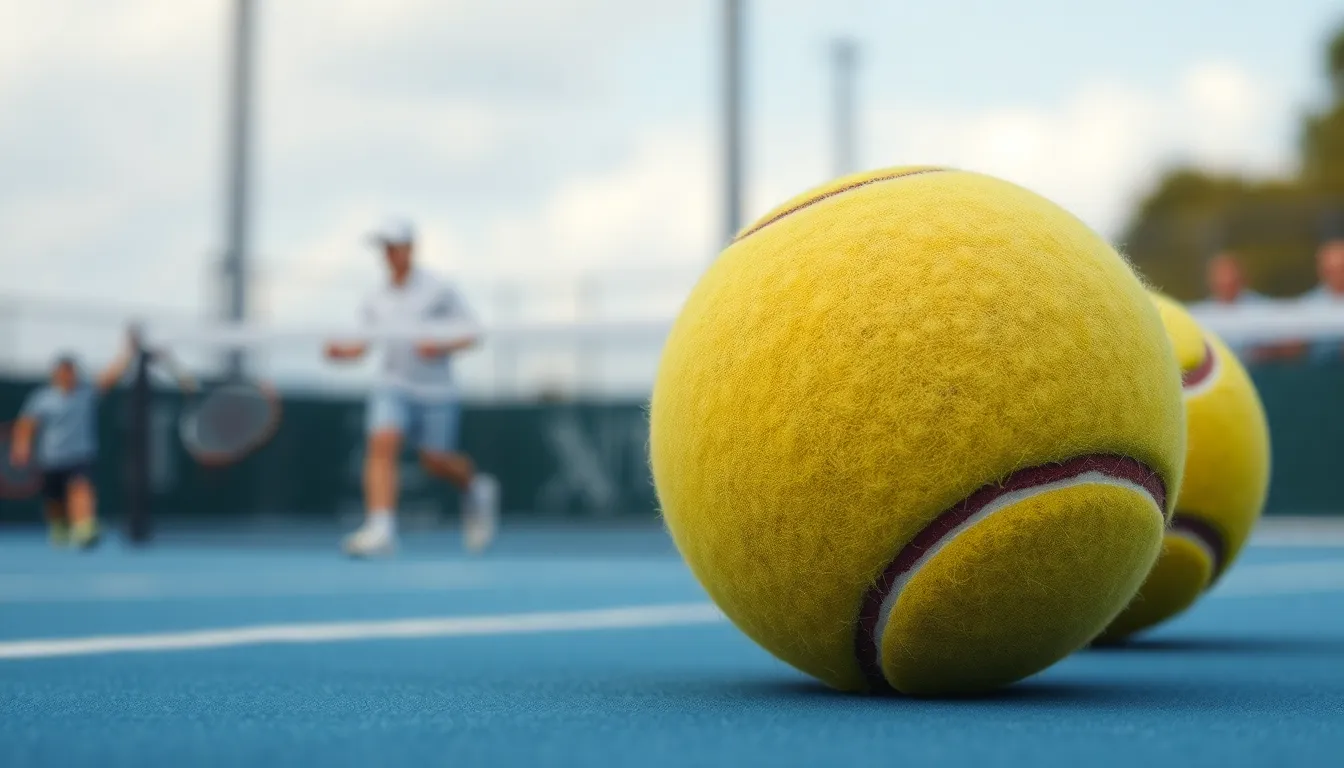
Competitive tennis balls have significantly shorter lifespans than most players realize. For professional-level matches, pressurized tennis balls maintain optimal performance for only 1-3 hours of continuous play before they’re considered “dead.” ATP and WTA tournaments replace balls after just 6-9 games to ensure consistent bounce and speed.
The rapid decline in competitive settings occurs because high-intensity play dramatically accelerates wear and tear. Professional players generate tremendous ball speeds and spin rates that compress the felt covering and reduce internal pressure much faster than recreational play.
Court surfaces play a crucial role in competitive ball longevity. Hard courts cause the most important damage to tennis balls, with felt wearing down quickly and pressure escaping rapidly. Clay courts extend ball life by approximately 20-30% compared to hard courts, while grass courts preserve balls best due to their softer surface.
“During my time coaching semi-professional players, I’ve observed how dramatically ball performance drops after just one intense match,” shares Azura Victoria from tennisservetypes.com. “Many of my students don’t realize they’re practicing with ‘dead’ balls until I bring fresh ones for comparison—the difference in bounce and responsiveness is immediately noticeable.”
Tournament-level players typically use each can of balls for a single practice session or match. This frequent replacement ensures consistent performance and reduces the risk of developing bad habits from compensating for unpredictable bounces. Club-level competitive players might stretch ball use to 2-3 matches, but performance noticeably declines after the first session.
Storing competitive balls properly between matches can slightly extend their usable life. Keeping them in a cool, dry place away from extreme temperatures helps maintain what’s left of their internal pressure, though the effect is minimal once they’ve been used in high-intensity play.
Signs Your Tennis Ball Needs Replacement
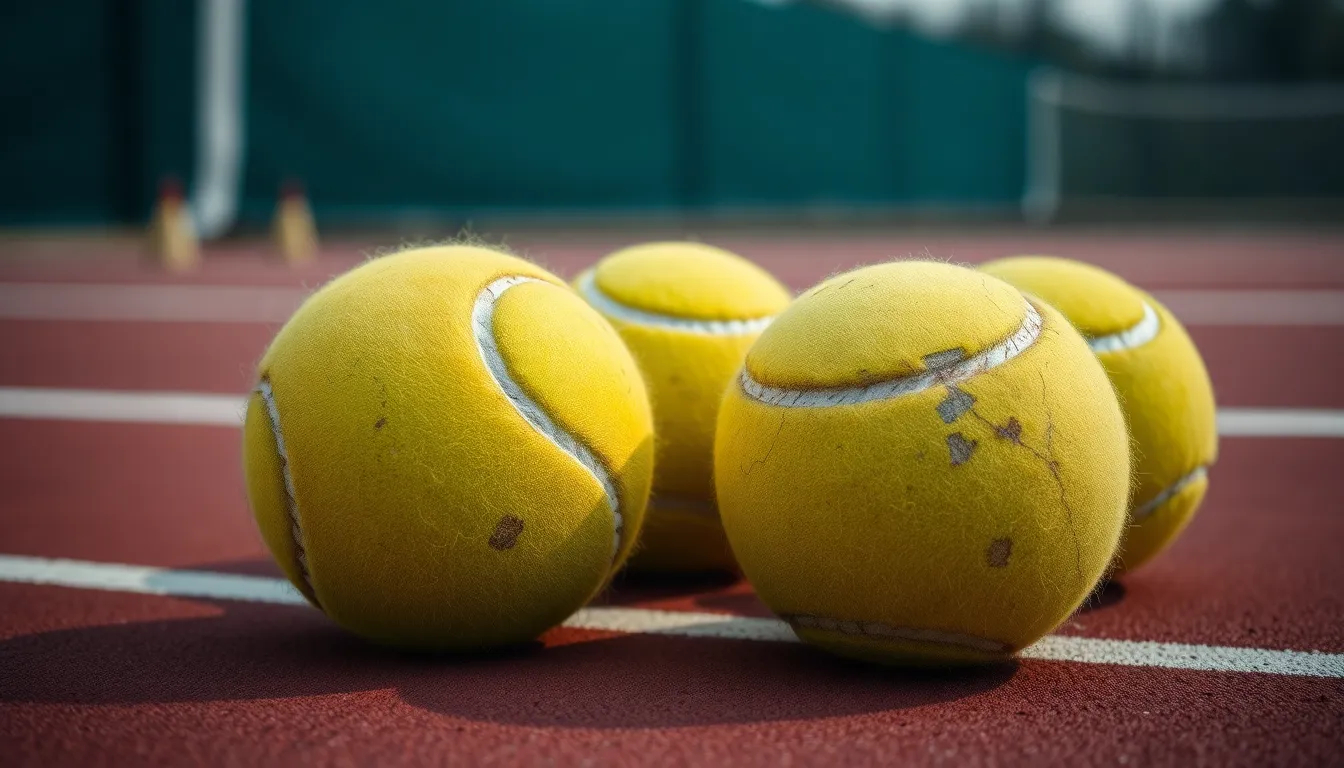
Tennis balls deteriorate gradually with use, and recognizing when they’ve reached the end of their useful life is crucial for maintaining your game quality. Knowing exactly when to replace your tennis balls helps you avoid practicing with equipment that might negatively impact your technique or enjoyment.
Loss of Bounce and Pressure
Decreased bounce is the most telling indicator that your tennis ball has lost its effectiveness. Pressurized balls rely on internal gas to create their characteristic bounce, which naturally decreases with time and play. You’ll notice balls bouncing significantly lower than when they were fresh, often stopping well below waist height after a standard bounce test.
A simple test involves dropping the ball from shoulder height onto a hard surface – fresh balls rebound to approximately 53-58% of the drop height, while “dead” balls return noticeably less. Many competitive players can feel the difference immediately in hand, as the ball becomes softer and more compressible when pressure has escaped.
During my coaching sessions, I’ve observed students struggling with their timing when using balls that have lost pressure, often not realizing the equipment is affecting their performance rather than their technique.
Visual Wear and Tear
Physical appearance offers clear signs of a tennis ball’s condition and remaining usefulness. Excessive balding where the felt has worn away creates uneven surfaces that affect ball flight and spin response. You’ll spot dark, shiny patches where the yellow fuzz has completely disappeared, particularly along the seams.
Flattened or matted fuzz indicates important court time, with the once-fluffy covering now compressed and ineffective at gripping the racquet strings. Severe scuff marks, cracks in the rubber core, or visible deformation mean immediate replacement is necessary.
Premium balls typically maintain their felt coverage longer than budget options, though even the best balls used on hard courts develop visible wear patterns after just a few hours of intense play. Tennis professionals discard balls showing even minimal visual wear, recognizing that performance deterioration begins long before the ball looks completely worn out.
How to Extend the Life of Your Tennis Balls
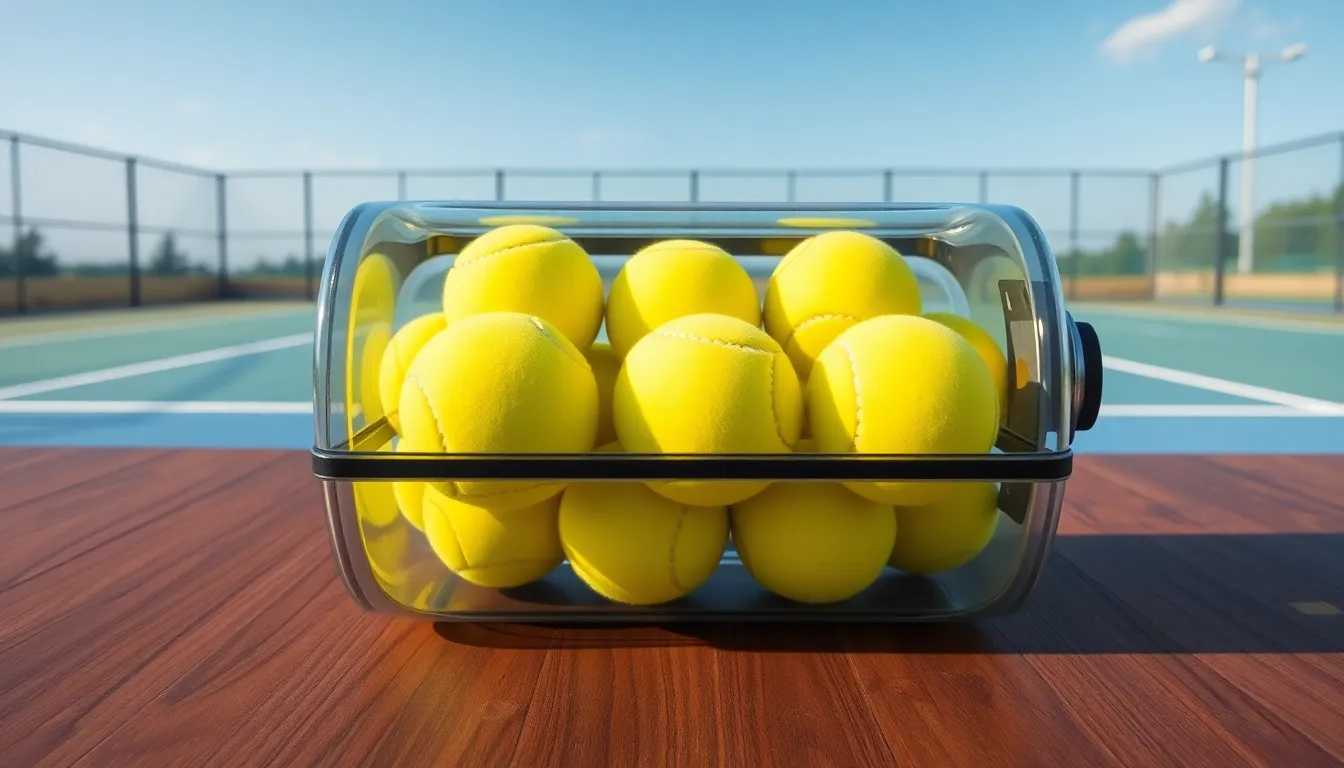
Tennis balls don’t have to become “dead” prematurely. With proper care and smart usage strategies, you can maximize their lifespan and save money while maintaining better performance on the court.
Proper Storage Techniques
Proper storage significantly extends tennis ball life by preserving internal pressure. Keep your balls in a cool, dry place away from heat, humidity, and direct sunlight, which accelerate pressure loss. The original pressurized cans offer excellent protection, keeping balls fresh for several months when sealed.
Many competitive players now use specialized pressurized containers like ball savers or pressure tubes that can extend ball life by 2-3 times their normal lifespan. These containers work by maintaining the internal pressure that naturally escapes from tennis balls over time.
Temperature control plays a crucial role in ball preservation. Balls stored in car trunks during summer months can lose up to 50% of their bounce in just a few days due to extreme heat. Instead, store them indoors at room temperature (65-75°F) for optimal preservation.
Rotation Strategies
Implementing smart rotation strategies prevents premature wear on your tennis balls. Alternate between new and older balls during practice sessions, saving your freshest balls for match play or serve practice where performance matters most.
For recreational play, use a systematic rotation approach by marking balls with small dots to track their age. Introduce one new ball with every second or third practice session while retiring the oldest ball in your rotation.
During matches, rotate all six balls equally throughout play rather than using the same three balls repeatedly. This distributes wear evenly across all balls, preventing some from deteriorating faster than others.
“I’ve found that my students who rotate their balls systematically not only save money but also develop more consistent technique,” notes Azura Victoria, founder of tennisservetypes.com. “Playing with consistently performing balls helps players develop more reliable strokes and better feel for the game.”
Avoid using “dead” balls for regular practice as they can negatively impact your technique. Balls that have lost their bounce force players to hit with excessive power, potentially creating swing flaws that transfer to match play. Reserve these older balls for exact drills like volleys or overheads where bounce quality is less critical.
Environmental Impact of Tennis Ball Disposal
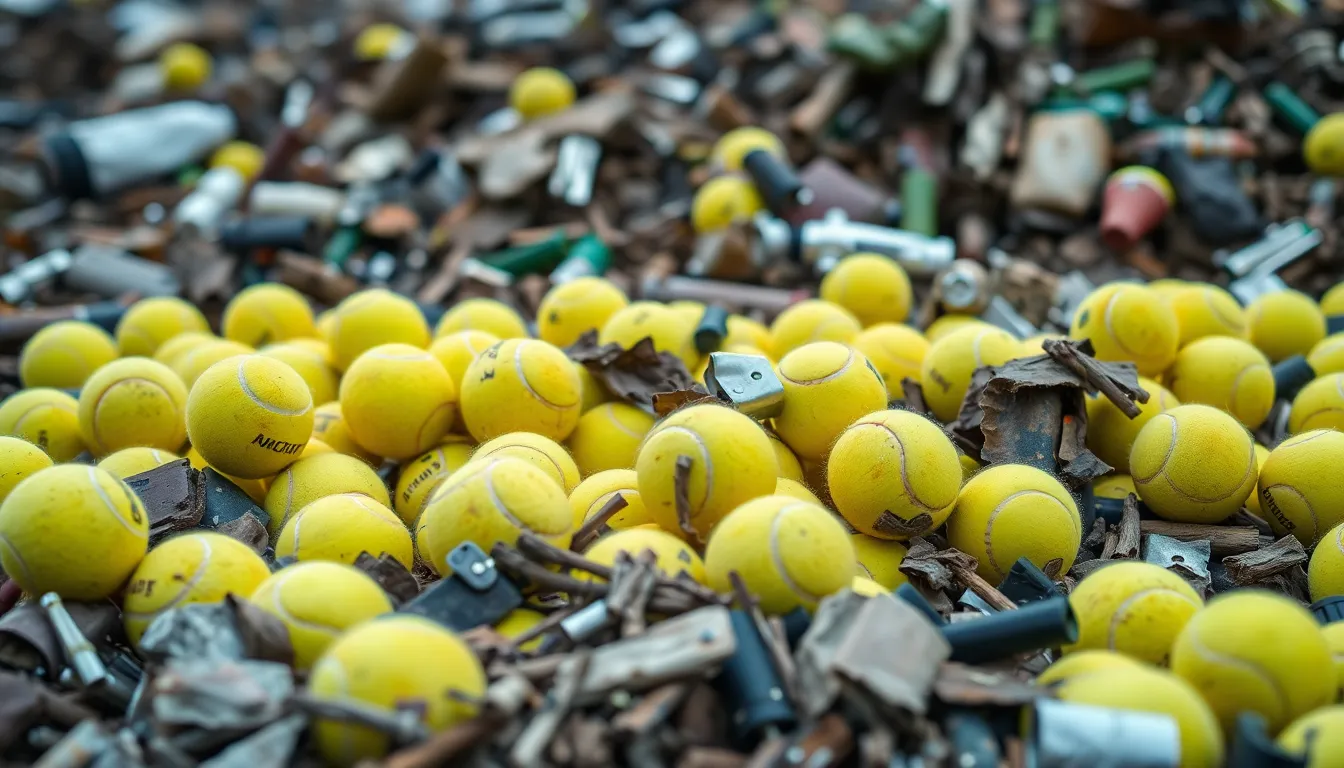
Tennis balls contribute significantly to environmental waste, with approximately 330 million produced annually worldwide. These seemingly innocent yellow spheres create a substantial ecological problem as almost all eventually end up in landfills. Once discarded, tennis balls take up to 400 years to decompose due to their non-biodegradable synthetic materials including rubber, felt, and various chemical compounds.
The manufacturing process itself poses environmental challenges. Production involves tropical rubber harvesting and energy-intensive manufacturing techniques that generate considerable carbon emissions. When balls are improperly disposed of, chemical components can leach into soil and groundwater, creating long-term contamination issues.
Tennis balls present a unique recycling challenge. Their complex material composition and resistance to mechanical processing makes them non-recyclable in conventional systems. The combination of rubber core, synthetic felt covering, and chemical additives creates a waste product that’s difficult to break down or repurpose through standard recycling channels.
During my years coaching at local clubs, I’ve witnessed firsthand the staggering volume of discarded tennis balls. After tournaments, bins overflow with barely-used balls that players discard after just a few sets. Many players don’t realize that those balls they toss after a single practice session will outlive them by centuries in a landfill.
Sustainability initiatives are emerging across the tennis industry. Several organizations and companies now develop creative answers to address this growing environmental concern. These include programs for repurposing gently used tennis balls for other applications and research into innovative recycling technologies specifically designed for tennis ball materials.
Tennis players can contribute to these sustainability efforts by donating used balls to programs that repurpose them for classroom chair feet, animal toys, or court resurfacing projects. Extending the life of your tennis balls through proper storage and care not only saves money but also reduces your environmental footprint on the court.
Conclusion
The humble tennis ball has a surprisingly short lifespan that most players underestimate. While professionals replace them after just a few games you can maximize their performance by understanding the factors that affect their longevity.
Your playing surface temperature storage methods and playing intensity all dramatically impact how long your balls will last. For optimal performance store them in cool dry conditions consider investing in pressurized containers and rotate your balls strategically during play.
Remember that using worn-out balls doesn’t just affect your enjoyment—it can damage your technique and form bad habits. By recognizing when it’s time for replacement and properly caring for your tennis balls you’ll improve your game experience while potentially reducing environmental impact.
Frequently Asked Questions
How long do tennis balls last?
New tennis balls maintain optimal performance for only 1-3 hours of continuous play. For recreational players, standard pressurized balls typically last 1-4 weeks, premium pressurized balls 3-6 weeks, and pressureless balls can last over a year. Professional tournaments replace balls after just six to nine games due to rapid performance decline. How you store your balls and where you play significantly impacts their lifespan.
What playing surface causes tennis balls to wear out fastest?
Hard courts cause the most damage to tennis balls due to high friction and abrasive surfaces. These courts rapidly wear down the felt covering and accelerate pressure loss. Clay courts extend ball life by 20-30% compared to hard courts, while grass courts preserve balls best with minimal friction. Indoor courts also help maintain ball quality longer because of stable temperature conditions.
How can I tell when my tennis balls need replacing?
Look for significant loss of bounce and pressure – fresh balls should rebound to about 53-58% of their drop height. Visual signs include excessive balding, flattened fuzz, and scuff marks on the felt covering. Tennis balls begin losing performance immediately after opening the can, with noticeable deterioration after just a few hours of intense play. Don’t wait until balls look completely worn out before replacing them.
How should I store tennis balls to extend their life?
Store tennis balls in a cool, dry place away from direct sunlight and extreme temperatures. Using specialized pressurized containers can extend ball lifespan by 2-3 times. High temperatures and humidity accelerate deterioration, while proper storage preserves internal pressure. For unopened cans, maintaining stable temperature conditions is crucial. Once opened, consider pressure-maintaining containers for best results.
Are pressureless tennis balls a good alternative?
Pressureless balls offer excellent value for casual players, maintaining consistent performance for months or even over a year. While they feel harder initially, their performance remains stable over time unlike pressurized balls that gradually lose bounce. They’re ideal for recreational play, teaching environments, and ball machines. However, they don’t provide the same feel and performance as fresh pressurized balls preferred by competitive players.
What environmental impact do tennis balls have?
Approximately 330 million tennis balls are produced annually, most ending up in landfills where they take up to 400 years to decompose. Tennis balls are difficult to recycle due to their complex material composition. The manufacturing process generates significant carbon emissions and potential soil contamination. Consider supporting tennis ball recycling programs or repurposing used balls for other applications to reduce environmental impact.
How often do professional players change their tennis balls?
Professional players typically use each can of balls for a single practice session or match. In professional tournaments, balls are replaced after only six to nine games. High-intensity professional play accelerates wear with tremendous ball speeds and spin rates. Tournament-level players always use fresh balls to ensure optimal performance, as even slightly worn balls can affect their game significantly.
Does playing style affect how quickly tennis balls wear out?
Yes, playing style significantly impacts ball wear. Players who hit with heavy topspin wear down felt faster, while hard-hitting players compress balls more, causing quicker pressure loss. Advanced players generally wear out balls faster than beginners due to higher ball speeds and more consistent sweet spot contact. Frequency and intensity of play are major factors in determining how quickly you’ll need to replace your tennis balls.

